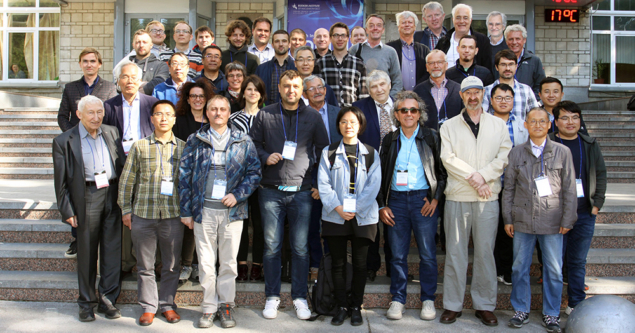
Accelerators of unstable or non-naturally occurring particles, such as the proton–antiproton colliders with which the W, Z and top quark were discovered, famously rely on “beam-cooling” techniques, which reduce the beam’s phase-space volume in order to achieve sufficient interaction rates. Cooling techniques continue to improve, enhancing current and future experiments using low-energy antiprotons, heavy ions and molecular beams, and enabling future muon colliders. The community of scientists and engineers developing and applying beam cooling has been meeting to exchange ideas for more than 20 years at the COOL workshops.
It was gratifying to see the proliferation and progress of beam-cooling technologies at the 12th biennial international workshop on beam cooling and related topics, held from 23–27 September at the Budker Institute of Nuclear Physics (BINP) in Novosibirsk , Russia. Electron-cooling R&D platforms were represented in profusion, including in the US (RHIC at Brookhaven and the planned EIC at Brookhaven and JLab), Germany (COSY at the Forschungszentrum Jülich, the CSR at MPI-K Heidelberg, and R&D at HIM Mainz), China (EICC and HIAF at IMP Lanzhou), CERN (the AD and ELENA), and Russia (NICA at JINR Dubna). Most of these are joint efforts with BINP, which continues to be the primary source for high-voltage, electron-gun and solenoid systems for such coolers. Also represented were stochastic cooling installations, tests of coherent electron cooling, and, at long last, results from the Muon Ionisation Cooling Experiment – notably, the first observation of muon ionisation cooling (first conceived at BINP almost 50 years ago), and a measurement of multiple scattering in a lithium-hydride energy absorber. Results with liquid hydrogen, and a wedge-shaped plastic absorber designed to demonstrate emittance exchange between the transverse and longitudinal planes, are expected soon.
It was unfortunate that no one from a US national laboratory was able to travel to Novosibirsk in person – apparently a casualty of anti-Russia sanctions
Another highlight of the workshop was the report from Brookhaven, “Cooling commissioning results of the first RF-based electron cooler LEReC,” which was delivered remotely by Alexei Fedotov. It was unfortunate that no one from a US national laboratory was able to travel to Novosibirsk in person – apparently a casualty of anti-Russia sanctions. Even at the height of the Cold War, US–USSR scientific contacts in particle and accelerator physics were successfully pursued. The argument that by cutting off such contacts one is shooting oneself in the foot seems quite plausible – after all, we go in order to learn.





